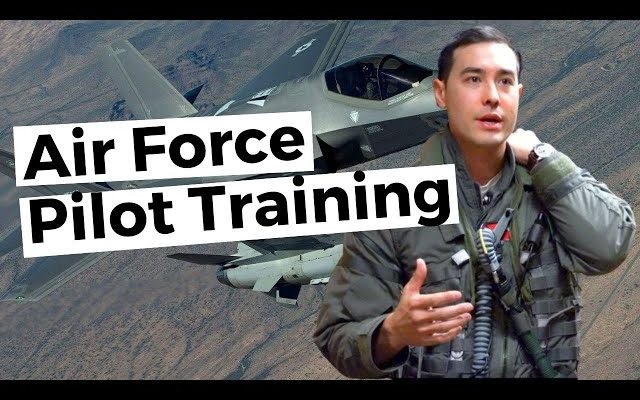Sky High Dreams: A Step-by-Step Guide to Becoming a Fighter Pilot
Becoming a fighter pilot is the dream of many individuals who crave the thrill of flying high-performance jets and defending their nation. The path to this prestigious role is both challenging and rewarding, requiring physical, mental, and academic excellence. Whether you aspire to join the Air Force, Navy, or another branch of the military, becoming a fighter pilot involves dedication, rigorous training, and an unwavering passion for aviation. In this comprehensive guide, we’ll walk you through the steps to transform your dreams of piloting fighter jets into reality.
What Does a Fighter Pilot Do?
Fighter pilots operate military aircraft designed for air combat, reconnaissance, or other specialized missions. Their primary duties include flying high-speed jets, engaging in simulated and real-world combat scenarios, and working as part of a larger military strategy. Fighter pilots are also responsible for maintaining their aircraft, interpreting mission data, and collaborating with ground teams to ensure successful missions.
The role demands quick decision-making, situational awareness, and the ability to remain calm under extreme pressure. As such, the path to becoming a fighter pilot is intentionally rigorous to ensure that only the best candidates make it through.
Step 1: Meet the Basic Requirements
Before embarking on the journey to become a fighter pilot, you must meet specific eligibility criteria. These requirements vary by country and military branch, but the following are generally applicable:
- Age: Candidates typically must be between 18 and 30 years old. Some exceptions may apply for prior military service.
- Education: A bachelor’s degree is often required, preferably in a field related to science, technology, engineering, or mathematics (STEM). Degrees in aeronautical engineering or physics are particularly advantageous.
- Citizenship: Most military branches require you to be a citizen of the country you wish to serve.
- Physical Fitness: You must pass stringent physical fitness and medical exams, including vision tests. Perfect or near-perfect vision is usually mandatory, although corrective surgery may be allowed in some cases.
Step 2: Pursue a Degree and Develop Key Skills
To become a fighter pilot, education is essential. While any bachelor’s degree may technically qualify you, selecting a STEM-related field can set you apart and provide a strong foundation for the technical aspects of piloting.
In addition to formal education, develop skills that will be invaluable as a pilot, such as:
- Leadership: Take on leadership roles in school or community organizations to demonstrate your ability to manage and inspire others.
- Communication: Strong verbal and written communication skills are crucial for coordinating with teams and delivering concise reports.
- Physical Fitness: Maintain a high level of fitness through regular exercise, focusing on cardiovascular endurance, strength, and flexibility.
Step 3: Join the Military
Becoming a fighter pilot requires military service, as fighter pilots are trained and employed by the armed forces. Here’s how you can begin your military career:
- Choose Your Branch: Research the various military branches (Air Force, Navy, Marine Corps, etc.) to find the one that aligns with your goals. Each branch has its own fighter pilot training programs and aircraft.
- Enroll in Officer Training: Most branches require you to attend Officer Candidate School (OCS) or a military academy like the U.S. Air Force Academy. These programs prepare you for leadership roles and instill the discipline needed to succeed in the military.
- Pass Basic Training: All recruits must complete basic training, where you’ll learn military protocols, improve your physical fitness, and develop mental resilience.
Step 4: Pass Initial Flight Training
Once you’ve completed your initial military training, the next step is to prove your aptitude for flying. Most branches require candidates to undergo rigorous flight screening programs, where you’ll be tested on your ability to handle the fundamentals of aviation.
- Flight Aptitude Tests: These exams evaluate your cognitive abilities, hand-eye coordination, and understanding of aviation concepts. Prepare thoroughly by studying aviation principles and practicing simulations.
- Initial Flight Screening: This program introduces you to basic flight maneuvers and ensures that you’re capable of advancing to more complex training.
Step 5: Attend Specialized Pilot Training
After passing the initial flight screening, you’ll begin formal pilot training. This phase is highly competitive, and only the top-performing candidates are selected to become fighter pilots.
- Undergraduate Pilot Training (UPT): This intensive program teaches advanced flight skills, including navigation, formation flying, and aerobatics. You’ll spend hundreds of hours in both simulators and real aircraft.
- Selection for Fighter Aircraft: Based on your performance during UPT, you may be chosen to specialize in fighter jets. This selection process is highly competitive, as fighter pilot slots are limited.
- Advanced Training: Once selected, you’ll receive advanced training specific to fighter aircraft. This includes mastering high-speed maneuvers, dogfighting tactics, and weapons systems.
Step 6: Earn Your Wings
Completing your pilot training earns you the coveted title of “pilot” and your military wings. At this point, you’ll officially become a military aviator, but the journey doesn’t end here. Fighter pilots must continue to hone their skills and stay up-to-date with evolving technology and tactics.
Step 7: Stay Qualified and Advance Your Career
Being a fighter pilot is a lifelong commitment to excellence. You’ll need to regularly undergo requalification exams, flight simulations, and physical fitness tests. Many pilots also pursue advanced degrees or leadership roles to further their careers.
- Ongoing Training: Participate in regular exercises, including mock combat scenarios, to maintain your readiness.
- Professional Development: Take advantage of opportunities to attend specialized schools or programs, such as the U.S. Navy Fighter Weapons School (TOPGUN).
- Leadership Opportunities: As you gain experience, consider advancing to leadership positions, such as squadron commander.
Challenges and Rewards of Becoming a Fighter Pilot
The road to becoming a fighter pilot is far from easy. You’ll face intense competition, long hours of training, and physical demands that push you to your limits. However, the rewards are unparalleled. Fighter pilots enjoy the thrill of flying cutting-edge jets, the pride of serving their country, and the camaraderie of working with fellow aviators.
Tips for Aspiring Fighter Pilots
- Start Early: If you’re still in school, focus on excelling academically and staying physically fit.
- Seek Mentorship: Connect with current or former fighter pilots for guidance and inspiration.
- Stay Determined: The process is challenging, but perseverance and passion will see you through.
Becoming a fighter pilot is a demanding yet rewarding journey that requires dedication, resilience, and a love for flying. By following the steps outlined above and staying committed to your goals, you’ll be well on your way to soaring through the skies as a fighter pilot.


